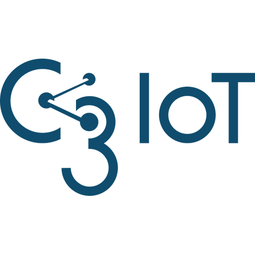Download PDF
Revolutionizing Commercial Credit with AI

Technology Category
- Analytics & Modeling - Machine Learning
- Platform as a Service (PaaS) - Application Development Platforms
Applicable Industries
- Education
- Finance & Insurance
Use Cases
- Predictive Maintenance
- Time Sensitive Networking
Services
- Data Science Services
The Challenge
One of the largest banks in Asia, Africa, and the Middle East, with a presence in over 60 countries, was grappling with the complexity of its commercial lending process. The bank, responsible for providing clients with more than $100 billion worth of credit, had to efficiently offer a variety of credit products and services to thousands of businesses across numerous countries and sectors. The process of assessing the creditworthiness of its clients was time-consuming and required the collection, review, and analysis of thousands of fields of both qualitative and quantitative information. This included financial statement line items, performance metrics, credit history, and natural language assessments of the borrower’s business prospects. The bank's credit officers had to navigate disparate systems, collaborate with relationship managers and credit analysts on credit structure and conditions, and request additional information before making a final decision. The average time-to-decision was often measured in weeks.
The Customer
Not disclosed
About The Customer
The customer is one of the largest banks operating across Asia, Africa, and the Middle East, with a presence in over 60 countries. The bank manages an end-to-end commercial lending process, providing clients with more than $100 billion worth of credit. The bank employs a team of hundreds of relationship managers, analysts, and credit officers to efficiently provide a variety of credit products and services to thousands of businesses spread across dozens of countries and sectors. The bank has an annual operating income of $14 billion and employs 85,000 people globally.
The Solution
The bank adopted C3 AI® Smart Lending, a SaaS application built with the C3 AI Platform, to reengineer its lending process. This solution uses machine learning to reduce the average approval cycle time by 30%. The streamlined process enabled the bank to extend more credit, accelerate revenue, and improve customer satisfaction. The C3 AI Platform applies machine learning to all relevant data sources to rapidly generate predictive insights. These insights can be used to enhance rules-based banking systems, improve critical compliance and operational processes, and transform customer experiences. The implementation of the C3 AI Platform across the enterprise was projected to bring significant economic value.
Operational Impact
Quantitative Benefit
Related Case Studies.

Case Study
Real-time In-vehicle Monitoring
The telematic solution provides this vital premium-adjusting information. The solution also helps detect and deter vehicle or trailer theft – as soon as a theft occurs, monitoring personnel can alert the appropriate authorities, providing an exact location.“With more and more insurance companies and major fleet operators interested in monitoring driver behaviour on the grounds of road safety, efficient logistics and costs, the market for this type of device and associated e-business services is growing rapidly within Italy and the rest of Europe,” says Franco.“The insurance companies are especially interested in the pay-per-use and pay-as-you-drive applications while other organisations employ the technology for road user charging.”“One million vehicles in Italy currently carry such devices and forecasts indicate that the European market will increase tenfold by 2014.However, for our technology to work effectively, we needed a highly reliable wireless data network to carry the information between the vehicles and monitoring stations.”

Case Study
Safety First with Folksam
The competitiveness of the car insurance market is driving UBI growth as a means for insurance companies to differentiate their customer propositions as well as improving operational efficiency. An insurance model - usage-based insurance ("UBI") - offers possibilities for insurers to do more efficient market segmentation and accurate risk assessment and pricing. Insurers require an IoT solution for the purpose of data collection and performance analysis

Case Study
Smooth Transition to Energy Savings
The building was equipped with four end-of-life Trane water cooled chillers, located in the basement. Johnson Controls installed four York water cooled centrifugal chillers with unit mounted variable speed drives and a total installed cooling capacity of 6,8 MW. Each chiller has a capacity of 1,6 MW (variable to 1.9MW depending upon condenser water temperatures). Johnson Controls needed to design the equipment in such way that it would fit the dimensional constraints of the existing plant area and plant access route but also the specific performance requirements of the client. Morgan Stanley required the chiller plant to match the building load profile, turn down to match the low load requirement when needed and provide an improvement in the Energy Efficiency Ratio across the entire operating range. Other requirements were a reduction in the chiller noise level to improve the working environment in the plant room and a wide operating envelope coupled with intelligent controls to allow possible variation in both flow rate and temperature. The latter was needed to leverage increased capacity from a reduced number of machines during the different installation phases and allow future enhancement to a variable primary flow system.

Case Study
IoT platform Enables Safety Solutions for U.S. School Districts
Designed to alert drivers when schoolchildren are present, especially in low-visibility conditions, school-zone flasher signals are typically updated manually at each school. The switching is based on the school calendar and manually changed when an unexpected early dismissal occurs, as in the case of a weather-event altering the normal schedule. The process to reprogram the flashers requires a significant effort by school district personnel to implement due to the large number of warning flashers installed across an entire school district.

Case Study
Automated Pallet Labeling Solution for SPR Packaging
SPR Packaging, an American supplier of packaging solutions, was in search of an automated pallet labeling solution that could meet their immediate and future needs. They aimed to equip their lines with automatic printer applicators, but also required a solution that could interface with their accounting software. The challenge was to find a system that could read a 2D code on pallets at the stretch wrapper, track the pallet, and flag any pallets with unread barcodes for inspection. The pallets could be single or double stacked, and the system needed to be able to differentiate between the two. SPR Packaging sought a system integrator with extensive experience in advanced printing and tracking solutions to provide a complete traceability system.

Case Study
Transforming insurance pricing while improving driver safety
The Internet of Things (IoT) is revolutionizing the car insurance industry on a scale not seen since the introduction of the car itself. For decades, premiums have been calculated using proxy-based risk assessment models and historical data. Today, a growing number of innovative companies such as Quebec-based Industrielle Alliance are moving to usage-based insurance (UBI) models, driven by the advancement of telematics technologies and smart tracking devices.





